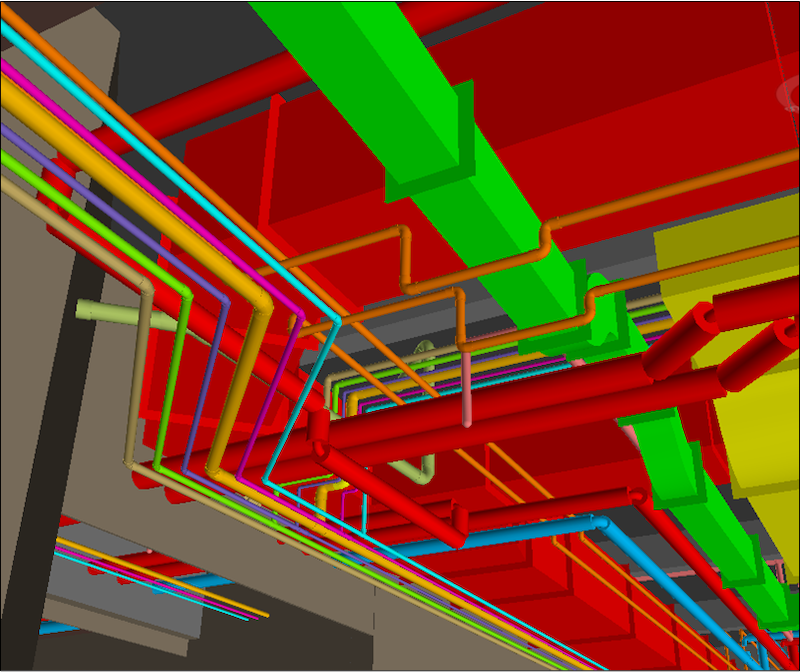With today’s high demand for construction, a small pool of available and trained trade workers, and the need to build quicker and smarter, finding a way to increase productivity and efficiency is every project team’s goal.
One increasingly popular trend that is helping solve this dilemma is prefabrication. By constructing materials before they hit the job site, trade contractors are boosting their operations. Prefabrication decreases field installation time, increases quality and safety, and reduces the amount of wasted materials.
While prefabricating materials seems like a perfect solution, it can cause more damage than good if not executed utilizing the correct technology. This is where Building Information Modeling (BIM) comes in – it’s what ultimately makes prefabrication opportunities possible.

HOW IT WORKS
Without BIM, designing prefabricated materials becomes a difficult task, and contractors risk creating parts and pieces that may not fit together as intended once installed on the job site.
However, through the use of highly-detailed and coordinated BIM 3D models of various architectural, structural and MEP systems, each trade contractor can be confident their system will fit and install according to the design. Using specialized software, contractors can create a fabrication-level 3D file, which is then used in a Computer Aided Manufacturing (CAM) machine that creates the building component or part with accuracy and quality.
CASE STUDY
On the recent McHenry Row redevelopment project in Baltimore, Maryland, wall panels were prefabricated for one of the apartment buildings. The project team utilized BIM to coordinate the wall panel system with the mechanical, plumbing and electrical systems. These wall panels were then fabricated in an off-site shop and delivered to the project with pre-cut openings to allow ductwork and pipes to pass through. By incorporating BIM to prefabricate the panels, the trade contractors were able to deliver efficient and accurate materials, allowing the project to remain on schedule and within budget.
Prefabrication will continue to be a key factor to increase productivity and efficiencies throughout the construction process. Utilizing BIM for prefabrication will help improve productivity and quality, ultimately delivering a better project process.








